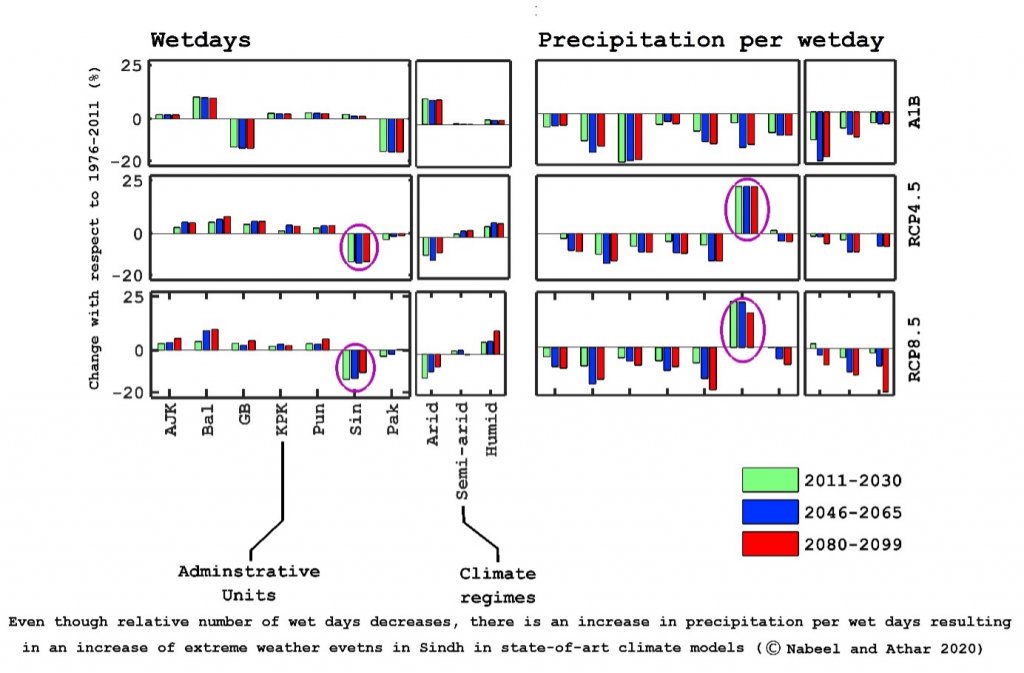
This article is part of the ISC’s Transform21 series, which will explore the state of knowledge and action, five years on from the Paris Agreement and in a pivotal year for action on sustainable development.
Situated in South Asia, Pakistan is a land of rich biodiversity. To the North it shelters the world’s second highest mountain, K2, the glaciers in the Karakoram Mountain range, and the upper Indus River basin. To the South it touches the Arabian Sea, including the rapidly evolving deep-water port of Gwadar. Due to this specific geographic location, Pakistan is highly vulnerable to climate change. In fact, Pakistan is listed as the eighth most vulnerable country globally according to the recent Germanwatch report, even though it is responsible for less than 1% of global carbon emissions. This high vulnerability is further corroborated by the recently released Sixth Assessment Report of Working Group I of the IPCC (IPCC AR6), calling for more to be done to combat climate change, as summarized by my alma mater The Abdus Salam Centre for Theoretical Physics in Trieste, Italy. Through my PhD students’ and my own research, I’d like to show evidence of temperature and precipitation changes, which further make the country vulnerable, and thus call for sustainable solutions.
In Pakistan, during the past 50 years the average temperature increase has been about 0.3 degree Celsius per decade. This rise of one third of a degree every ten years is somewhat higher than the global average, which was about 0.2 degree Celsius per decade for the same period. A back-of-the-envelope estimation thus indicates that starting from the year 2000, the temperature in Pakistan will rise by about 1.0 degree Celsius by 2030. However, what we find is that precipitation does not show a steady trend.
Between 2014 and 2020, several graduate students have analysed in detail various basic and applied aspects of climate change in Pakistan under my supervision. We dealt especially with climatic variables but also studied the influence of climate change on specific societal aspects using these climatic variables. To give an example of analysed results addressing basic aspects of climate change in Pakistan, Figure 1 shows relative changes in projected precipitations. Indeed, under the new version of the Carbon emission scenarios (the representative concentration pathways, or RCPs), more extreme rainfall events are expected in the coming decades, especially in the administrative region of Sindh, situated in southern Pakistan, which mainly has an arid climate.

Our research group also studied several applied aspects of climate change in Pakistan. To inform policy-makers, one such study involved an attempt to analyse a large number of images from the Landsat satellite to provide independent verification of the seasonal variability in the surface water extents of the two large water reservoirs (Tarbela and Mangla) in northern Pakistan for the period 1981-2017. Through detailed statistical modelling, we successfully identified the subglacial basins feeding the two reservoirs that carry most of the respective surface water extent variability of the two reservoirs. A timely assessment of Tarbela and Mangla seasonal water variability plays a crucial role for the agricultural produce of Pakistan.
The message we want to convey with our research on these two aspects of climate change in Pakistan is that we need to develop and implement effective strategies to enable a sustainable future. Glaciers in the northern part of the country provide fresh water for the more than 220 million people of Pakistan. The accelerated melting of these glaciers is threatening this vital lifeline. Currently, measures such as large-scale tree planting is one of the solutions that is finding political will and backup in Pakistan. Furthermore, harvesting rainwater (particularly during Monsoon season) is a suggested solution to effectively harness the sporadic, short-lived but extreme rainfall events in the arid lands of our country. Taking measures now to ensure a sustainable future is the key to maintaining the biodiversity in the unique ecosystems that currently exist both in northern and southern Pakistan.

Dr. Athar Hussain
Dr. Athar Hussain is a Professor in the Department of Meteorology and the Head of the Centre for Climate Research and Development at COMSATS University Islamabad in Pakistan. He has been serving as a COMSATS Science Ambassador in the field of Climate Change since 2015.
Header photo by Salman Hossain Saif on Unsplash.